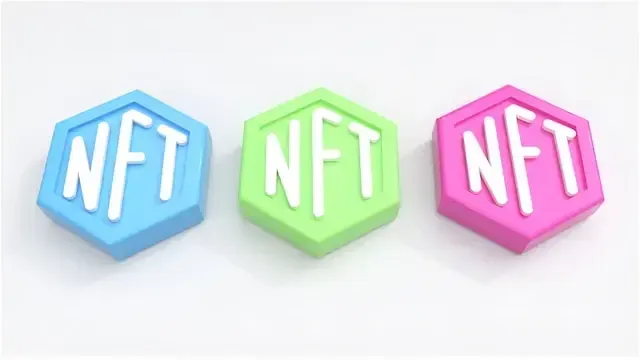This comprehensive guide will equip you with knowledge and tools you need to navigate the world of online shopping with confidence. We will explore important security practices, from spotting red flags on networks to cracking impenetrable passwords. We will explore the most secure payment methods and the importance of protecting your personal information.
Worried about hackers stealing your credit card info or identity when you shop online? Don't be! Here's how to shop safely and securely.The internet has changed the way we shop. Crowded malls and aimless browsing is gone.You can nowadays buy anything from the latest gadgets to groceries, all delivered right to your doorstep with just a few clicks. Despite this relief, comes another challenge; ensuring your online safety. While online commerce offers many advantages, hackers and scammers on the other hand are always on the prowl, waiting to exploit vulnerabilities. From fake websites masquerading as reputable retailers to phishing emails designed to steal your credit card information, the digital landscape can be a minefield for unwary consumers. Whether you’re an experienced online shopper or just dipping your toe into virtual markets, this article is your last resort to a safe and satisfying shopping experience. So, grab your virtual shopping cart, buckle up , and enjoy the joys of online shopping. Let’s shop safely and explore the world!
Honing artistic skills: How to become a smart online shopper
The appeal of online shopping cannot be denied. Convenience, great selection, and competitive pricing are all our cues to hit that "buy" button. But there is a pitfall that can lurk underneath – the ease of early purchase and the risk of abuse. This is where the art of smart online shopping comes in. More effectively, you can transform your online shopping experience, save money and get the right products and avoid the customer’s remorse.
- The concept of needs and desires is:
The first step is to submit your idea to your online store. Before you hit the big digital marketplace, take some time to think about your needs. Are you replacing a broken product, or addressing a specific need? Distinguish between these needs and desires, these fleeting desires driven by marketing or social media trends. By prioritizing needs, you set clear goals and avoid immediate purchases that may not align with your budget or long-term goals.
- Research is your weapon:
Once you know your needs, arm yourself with knowledge. Check the product carefully. Read reviews from verified users on trusted platforms. Check out the unboxing video and tutorial to get a real sense of the features of the product and how it works. Find a comprehensive buying guide that compares models and highlights key considerations. The more you know, the more likely you are to be tempted by misleading marketing or get inappropriate products.
- Embrace the power of comparison:
The online world offers many options. Don’t stop at the first store you come across. Use price comparison websites and browser extensions to find the best deals on the products you want. Accept additional costs such as shipping and handling fees to get a true picture of the final price. Remember, the cheapest option is not always the best option. Consider things like the seller’s reputation, return policy, and customer service when making the final decision.
- Share discount codes and coupons with your friends:
Who doesn’t want the best? The internet is full of discount codes and coupons waiting to be discovered. Sign up for email newsletters fom your favorite brands and retailers. Look for couponing websites and apps. Many online stores offer student discounts, loyalty programs, and special promotions. With these features, you can significantly reduce the final purchase price, and significantly expand your portfolio.
- Perseverance is a virtue (and accumulation of wealth):
Instant gratification is a hallmark of online shopping. However, resisting the urge to buy immediately can be very rewarding. Many online retailers use promotions and sales strategies throughout the year. Black Friday, Cyber Monday, and seasonal sales offer huge discounts on a wide variety of items. If the purchase is not immediate, consider waiting for the sale to maximize your savings. In addition, some traders are warning that prices may fall. If you subscribe to these alerts, you will be notified when the price of a favorite item drops, so you can redeem in time.
- Master the art of wish lists:
Online stores are masters of temptation. Adding a product to your cart creates a sense of commitment, often leading to an immediate purchase. Instead, use the wishlist feature offered by most online retailers. This allows you to pack items you want without the pressure to buy immediately. Use your wish list as a resource for further research and price comparisons. It allows you to show off your favorite products to your friends and family, and possibly get the item as a gift, saving you quite a bit of money.
- Returns and Refunds: Know your rights:
Even careful planning doesn’t guarantee a good purchase every time. Know online stores’ return and refund policies before you buy. Look for vendors with customer-friendly return windows and make them clear methods of initiating discounts or rebates. A clear return policy builds confidence and protects against injury or damage.
With these strategies, you can transform from a casual online shopper to a knowledgeable one. Remember, online shopping is a journey, and with a little planning and research you can confidently navigate the digital marketplace and find the perfect deal at the best price. Happy shopping!
With these strategies, you can transform from a casual online shopper to a knowledgeable one. Remember, online shopping is a journey, and with a little planning and research you can confidently navigate the digital marketplace and find the perfect deal at the best price. Happy shopping!
Security Tips
1. Securing your connections and devices: The foundation for secure online shopping
When it comes to online shopping, security is paramount. You’re entrusting your personal financial information to networks, and it’s important to make sure the information remains secure. Securing your connections and devices is the cornerstone of secure online shopping. Here’s why:
- Think of your data like Fort Knox:
Treat your network and devices as digital fortresses that protect your data. A secure connection encrypts traffic between your device and the network, making it unreadable to those trying to intercept it. Like a guarded gate around your castle. Similarly, a secure device with the latest software and a strong password acts as a solid wall of a fortress, making it difficult to breach
- Protects public Wi-Fi connections:
Public Wi-Fi connections are common, but generally not secure. Hackers can lurk on these networks, waiting to steal information transmitted between devices and the Internet. When you secure your connection with a VPN (Virtual Private Network), you create an encrypted channel for your data and secure it over public Wi-Fi.
- Stop malware in its tracks:
Malicious software (malware) can infect your device and steal your information. Updating your device’s software and using strong passwords makes it harder for bad guys to get a foothold. For example, you have well-trained guards and gates at the gates of your castle. When you secure your connection and device, you are in charge of where you shop online. You are a safe haven where your information is protected from prying eyes and protected from malicious attacks. This foundation allows you to shop with confidence, knowing that your data is safe.
By adhering these steps, you can create a safe online shopping experience. Remember that securing your connections and devices is the first line of defense and ensures a secure shopping experience.
By adhering these steps, you can create a safe online shopping experience. Remember that securing your connections and devices is the first line of defense and ensures a secure shopping experience.
2. Protecting your information: The cornerstone of online shopping security.
While the convenience of online shopping cannot be denied, navigating the digital marketplace also comes with inherent risks. The inadvertent sharing of personal financial information can be a target for cyber criminals. So safeguarding your info remains the cornerstone of online shopping security. Here is a deep dive into why protecting your information is an essential security tip.
- Fortress against fraud:
When you shop online, you provide sensitive information like your name, address and credit card number to seller. If this information falls into the wrong hands, it can be used for fraudulent purchases, identify theft or even to open new accounts in your name. By prioritizing info protection, you minimize the risk of such outcomes.
- Gatekeeping:
Many websites require you to create an account with a username and the password. A weak or reusable password acts as an open door for hackers. If you have a password crack on any of your accounts, your personal archives can be accessed, potentially compromising your email, bank account, or other online information. Every account has a strong and unique password security policy required
- Countering phishing attacks:
Emails and websites masquerading as legitimate organizations are common weapons in the arsenal of cyber criminals. The goal of these phishing attempts is to trick you into revealing information about it need to reveal especially the information you share online in response to unsolicited email messages. Being careful about the issue greatly reduces your risk of receiving such scams
- Develop an attitude of trust:
When shopping online, you essentially trust the seller to protect your information. By putting information security first, you encourage appropriate online business practices. Look for vendors that use secure payment methods, store your data, and have clear privacy policies about how they handle your information.
By prioritizing information security by following these steps, you can transform from a vulnerable online shopper to a well-rounded online consumer, ready to consume with confidence role in the digital marketplace Remember that a little vigilance goes a long way in improving your personal growth investment security.
By prioritizing information security by following these steps, you can transform from a vulnerable online shopper to a well-rounded online consumer, ready to consume with confidence role in the digital marketplace Remember that a little vigilance goes a long way in improving your personal growth investment security.
3. Secure payments: The cornerstone of secure online shopping
While there’s no denying the convenience of shopping online, it’s natural to feel intimidated when setting up a budget. Hackers and online fraudsters are always looking for vulnerabilities, so it’s important to protect your hard-earned money. Here are the best safety tips on how to make secure payments when shopping online, and how they form the basis for a safe online shopping experience:
- Building a wall against fraud:
Secure payment methods act as a secure wall that prevents anyone from accessing your financial information. When you use a secure payment gateway, your sensitive data such as credit card numbers and bank account details are encrypted. Encryption scramble the data. It is almost impossible to capture and translate someone in an illegible form. This adds greater security, prevents potential pitfalls, and protects your finances.
- To reduce waste:
Even with the best precautions, data breaches can still occur. However, secure payment methods tend to prevent potential damage. Credit cards, for example, often come with protections against fraud. If your claim shows unauthorized charges, you can get all or part of the money back by notifying your bank. In addition, many credit cards fraudulently add no-liability protection, further reducing your balance sheet.
- How to Work with Security Authority:
Secure payment methods go beyond simple encryption. Technologies like two-factor authentication (2FA) add an extra layer of security by providing a second layer of authentication beyond just your password. This could be a code sent to your phone or a fingerprint scan. This greatly reduces the risk of someone else using your account if they manage to steal your password.
- Encourage trusted vendors to:
By prioritizing secure payment methods, you are implicitly encouraging trusted merchants. Companies that prioritize secure services demonstrate their commitment to protecting customer information. This improves trust and provides a safe online shopping environment for all.
- Peace of Mind Shopping:
Knowing that your financial information is safe allows you to relax and enjoy the shopping experience. You can confidently browse, compare prices without worry, and complete tasks in peace. Secure payments allow you to take full advantage of the variety of products and services offered online.
- Remember:
Secure payments are only one piece in the security puzzle of online transactions. Here are some more tips for having a safe online store:
•Buy only from reputable websites with secure connections (search for https:// in the address bar).
•Beware of deals that seem too good to be true.
•Avoid using public Wi-Fi for online shopping.
Update your software and antivirus.
•Check your bank statements regularly for suspicious activity.
By making secure payments a priority and following these new tips, you can significantly reduce the risks associated with online shopping and ensure a safe and enjoyable experience so, next time you hit that " buy" button – secure your payments are a foundation of happy online shopping spree!
•Buy only from reputable websites with secure connections (search for https:// in the address bar).
•Beware of deals that seem too good to be true.
•Avoid using public Wi-Fi for online shopping.
Update your software and antivirus.
•Check your bank statements regularly for suspicious activity.
By making secure payments a priority and following these new tips, you can significantly reduce the risks associated with online shopping and ensure a safe and enjoyable experience so, next time you hit that " buy" button – secure your payments are a foundation of happy online shopping spree!
Conclusion
To wrap up, although only shopping has been revolutionized, it is important to remain vigilant throughout your online shopping experience. By following these security tips, you can significantly reduce the risk of fraud and data breaches. Remember that a little caution can go a long way in protecting your personal information and finances. So go ahead and shop online with confidence! With this security system in place, you can surf the web for great deals and enjoy online shopping knowing you have taken the necessary steps to protect yourself. Happy shopping!


























